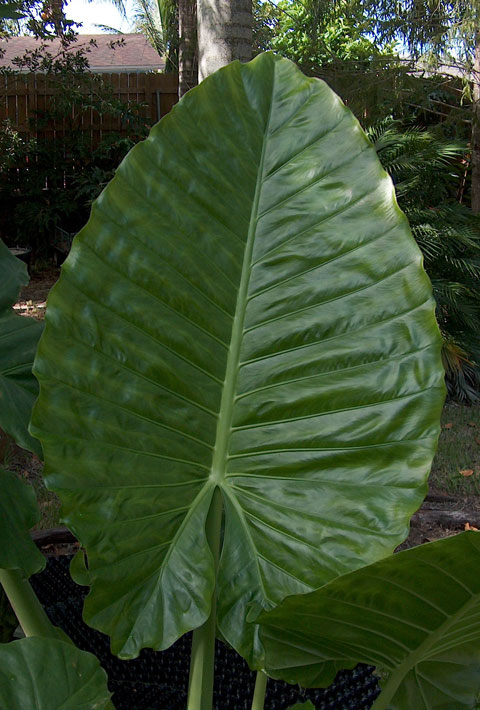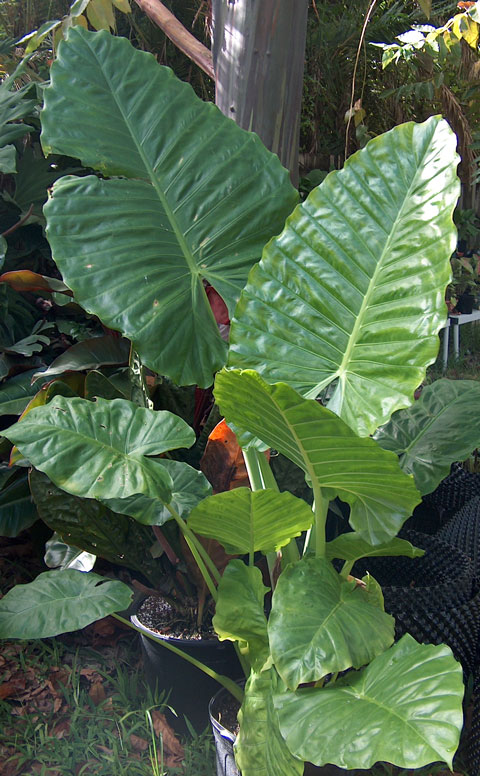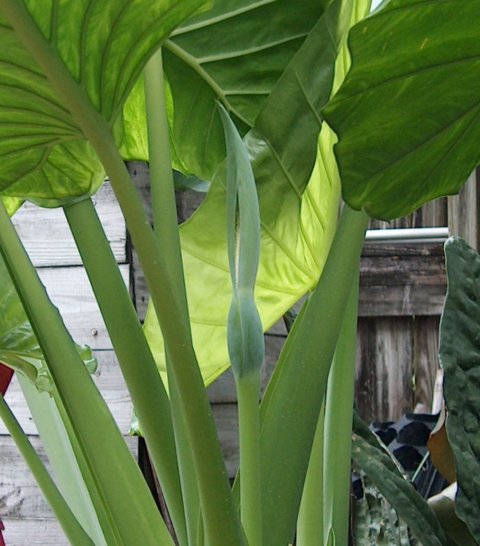Alocasia sp. "Green Giant"

This is another unusual Alocasia I discovered in a local nursery. While superficially it appears to be something like "just another A. macrorrhizos type", a close inspection revealed to me that this plant is unlike any other large green Alocasia I have seen or grown. The leaves are of more delicate substance or texture than those on A. macrorrhizos and certainly thinner and more delicate than those on A. odora. The veination on the abaxial (lower) leaf surfaces is somewhat prominent, a little reminiscent of that on the A. sarawakensis, but, again, more delicate. For me, though, what gave it away as something different was the main lateral vein count on the leaves. For example, mature leaves on the Alocasia macrorrhizos "Borneo Giant" have 10 to 12 main lateral veins coming off the central vein (starting at the "Y" junction where the petiole joins the blade and counting from there up to the tip), and other Alocasias, even large A. macrorrhizos types, have a lower number. This plant, however, so far has as many as 14 main laterals from the "Y" junction to the leaf tip, and considering that this plant is not yet a mature specimen, leads me to believe that it will grow to be quite large.
The only other Alocasia I know of that has this many, or more, main laterals is the Alocasia robusta, with the largest undivided leaf in the plant kingdom. Some pictures show as many as 18 main laterals on mature A. robusta leaves. I am anxious to see how large this one will get! If anyone who views this has any familiarity with this plant, please let me know; I have tentatively called it the "Green Giant".
An examination of the soil ball and root area revealed that the suckers arose from the main trunk, not from sprouted corms. In fact, no corms were observed in the examination. Also, the petiole attachment scars are much wider relative to trunk diameter than those found on A. odora, A. "Borneo Giant" and other Alocasias in our research collection.

In the photo above, you can see the entire plant, complete with suckers. The plant went through some abuse before I acquired it, and it is just now recovering enough to illustrate.

The inflorescence produced by this plant is very similar to a typical A. odora inflorescence. Shown above is a bloom that has just begun to open. The fragrance of this inflorescence is reminiscent of those on A. odora as well.
| In the Lab | In the Field | The Species | Fruiting | The Hybrids |